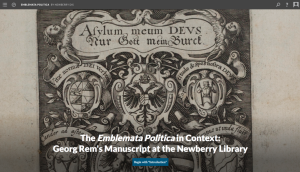Theme: Color
Back to Top
|
 |
|
The Fundamentals of Understanding Color Theory
|
Arts |
|
Graphic designers, marketing professionals, and entrepreneurs will find use in "The Fundamentals of Understanding Color Theory," an article by Kris Decker from Vistaprint's graphic design service, 99designs. The term "color theory" covers many things; it can be a practical guide to color mixing and the visual effects of color combination, the study of how people perceive color, the analysis of what certain colors communicate, and more. Pointing out that consumers decide whether or not they like a product within 90 seconds, and that decisions are largely based on color, this light-hearted, beginner-friendly article provides an overview of how to best utilize all aspects of color theory to build a brand. It explains two models for color mixing - additive for digital content and subtractive for print - and the importance of understanding the difference. The article also discusses how to use the familiar color wheel to understand the concepts of primary, secondary, and tertiary colors; aspects of color such as hue, shade, tint, and tone; and the three basic color schemes for design: complementary, analogous, and triadic. "The Fundamentals of Understanding Color Theory" closes with additional resources on how to choose logo color, emotional associations with color, the psychology behind color choices, and examples of how bad color design can make your overall design difficult to utilize, understand, read, or even look at. In all, this article neatly summarizes why readers should care about color theory. [RMP] |
|





|
|
 |
|
The X-Rite Color Challenge and Hue Test
|
Arts |
|
Did you know that 1 in 255 women and 1 in 12 men have some form of color vision deficiency? Readers who have ever been curious about color perception and acuity will find much to take away from X-Rite's Color Challenge and Hue Test. X-Rite, a company that blends the art and science of color to provide color management solutions across many industries, offer this free, short-form version of the Farnsworth Munsell 100 Hue Test to better understand color vision acuity. The test, which simply requires arranging a series of color swatches in a palette, not only identifies whether or not the user has a color deficiency, but where in the spectrum their hue discriminations lie, as well as allowing users to compare their score to others in their demographic. The Color Challenge and Hue Test also includes a Get the Facts section, which includes links to information about the full Farnsworth Munsell test and about color perception in general. Further resources include a color glossary, a blog, information about industry gadgets like spectrophotometers, and more. [RMP] |
|





|
|
 |
|
Color Theory from the Art of Education University
|
Arts |
|
Art teachers at the elementary and middle-school levels will want to check out the articles, videos, and other resources on color theory available from The Art of Education University (featured in the 11-20-2020 Scout Report), a fully online graduate university offering accredited degrees for art teachers. The resources were created by experienced art teachers to facilitate art education through lesson plans, activity ideas, and games for the classroom. For instance, the article "You Don't Have to Teach the Color Wheel Anymore," describes this outdated concept for exposing students to color theory and offers four engaging and nuanced alternatives. Another article, "7 Ways to Use Paint Chips in the Art Room," offers activity ideas using those free color palettes from the paint section of any hardware store. Many lesson plans include downloadable content for use in the classroom, although readers should note that they must create a free account to access these downloads. Art teachers can also check out other resources on the site for topics such as classroom management, technology, and teaching philosophies. [MJZ] |
|





|
|
 |
|
The Physics Hypertextbook: Color
|
Science |
|
The Physics Hypertextbook is an open-source, idiosyncratic, and highly readable online physics textbook created by author, illustrator, and science teacher Glenn Elert. Readers interested in the science of color will enjoy the Color chapter of the textbook, which through five sections lays out the conceptual and historical background on color, provides problems to apply these concepts, and links to further resources and information. The chapter is very easy to navigate: readers can simply scroll the page to read each section, then use the menu at the top or bottom of the page to jump to the next section. For instance, the "Discussion" section delves into the color spectrum, how English got its words for different colors, and the principles of color mixing, among other foundational concepts. The "Summary" section provides a short outline of the content covered in the Discussion, which should prove useful for physics students preparing for exams. The "Problems" section offers conceptual and numerical questions to apply color concepts. The hypertextbook is a work in progress, so readers will find some sections in various stages of completion, but nonetheless it provides a friendly and cogent overview of the science of color and the broader field of physics that beginners will enjoy. [MJZ] |
|





|
|
 |
|



















